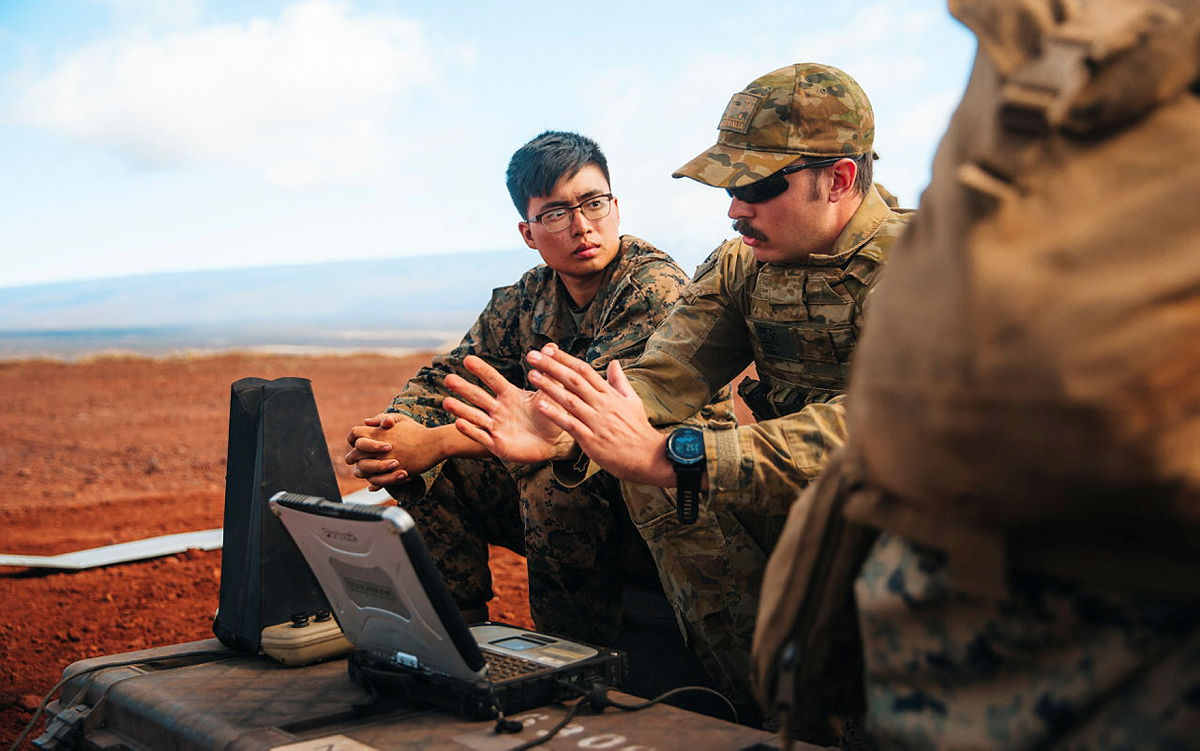Technology has become ubiquitous within the modern world, in particular with communication systems. There are few people in Australia today who do not have some sort of mobile phone, the majority being smart phones. Because of this, we have culturally become accustomed to being always online and contactable. In true form, Army has sought to achieve the same effect while still maintaining the security required by military communications; which, in essence are two competing requirements.
This attempt has been called many names over the years; network centric warfare, network enabled warfare, digitisation, and the list goes on. Army has introduced digital radios, battle management systems and computer systems continually over the last ten years. This has increased the ability to network a force to provide redundancy in communications but has also built a reliance on having a computer screen to fight from. This has led to communication systems being seen as almost the same thing as command and control.
Although it will likely be considered heresy in some circles, Army needs to rethink how it uses communication technology within a tactical environment to one that augments the ability to provide command and control, rather than the source of it. During a divisional level command post exercise, I watched as an entire brigade headquarters was rendered ineffective when a communication problem occurred which affected their battle management software. I watched as battle captains frantically tried to find out how many vehicles had been destroyed during the currently occurring clearance, the details lost to the battle management system when it crashed. No one had kept a hard copy. I watched as they tried to remember where each callsign was located. And I watched the single sergeant, a calm point in the storm, casually stroll up to the map board on the wall which only he had bothered to keep updated and find the detail they needed.
Communications had been lost due to a failure of technology. Although, a quick check would have told them the radio was still working, and the adage of ‘you can’t jam a map’ proved true.
This is an example of where technology should have been augmenting the headquarters ability to conduct its role, but was instead subsumed by it. This is dangerous in the modern battlespace. Every credible force in the world is constantly seeking ways to disrupt each other’s communications, which means there is a constant threat of losing them. So what do we do?
The first and most common answer is to provide more communication equipment. This builds a redundancy of networks that can be used, meaning when the battle management system dies, you grab your radio. The second is less acknowledged, but equally valuable in the right circumstances; go analog again. Get a soldier on a motorbike to deliver hard copy orders. Simple? Yes. Effective? In the correct circumstances, far more so than fighting to get a computer system working.
There are also options to go back to simple communication methods but in a more advanced way. One such example is what has been coined ‘digital pigeons’. Much like pigeon messengers of the past, a digital pigeon is simply a drone in which you can deposit an encrypted USB or HDD and fly the information to another unit.
The rush to embrace technology as the solution to all of a military’s problems is one that must be tempered with a simple axiom; technology should augment human endeavours, not subsume them.
About the author
Scott Cirakovic is a current serving officer within the Royal Australian Corps of Signals who has served in a broad range of roles, including communications support to divisional headquarters, brigade headquarters and battle groups. He has operational experience in Afghanistan supporting both Australian and multinational teams.

